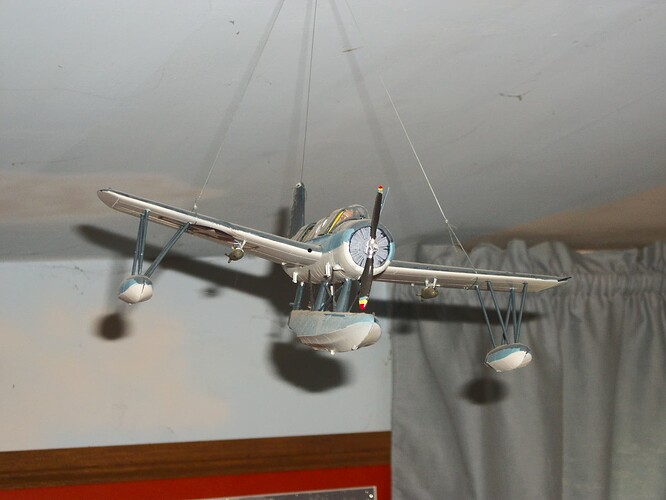Time for another pic! Here is the OS2U Kingfisher float plane.
The Kingfisher, in this configuration (there was also a wheeled version) served aboard battleships, cruisers, and a VERY few destroyers* for over-the-horizon scouting, anti-submarine patrol, artillery observation (i,e, spotting the fall of shot and calling in corrections), practice-target tow birds, and, in emergencies, recovery of downed pilots. There is a famous photo of a Kingfisher burdened by its own crew of two and
seven pilots/aircrew hanging on the wings and floats. Of course, it couldn’t take off thus loaded, but it kept them all out out of the water until a submarine rescued the whole group (the plane was, alas! a total loss).
Slow, lightly armed, and lightly built, these unglamorous aircraft contributed to the victory far above their weight class, as it were.
*Soon after Pearl Harbor, the USN was eager to get as many aircraft afloat as possible. One solution mooted was the modification of some of the new Fletcher-class destroyers by landing Mount 53 (one of the 5" gun houses) and moving Mount 41 (the twin 40mm Bofors) to the fantail, and fitting a cruiser-style catapult to the deckhouse, adding a light crane, and shipping an OS2U. The experiment was not successful, as the plane could only be recovered in very calm seas because of the rollicking nature of a destroyer, and, during, the later years of the war, when many more cruisers and battleships were in service as well as a flood tide of carriers, the catapults were landed, and the guns rearranged and refitted. I don’t have a pic of my own to post, but you can search for pics of the USS Halford at navsource.



